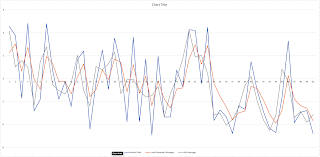Exercise 3.66. Examine the stream (pairs integers integers) . Can you make any general comments about the order in which the pairs are placed into the stream? For example, about how many pairs precede the pair (1,100)? the pair (99,100)? the pair (100,100)? (If you can make precise mathematical statements here, all the better. But feel free to give more qualitative answers if you find yourself getting bogged down.) SOLUTION The pairs produced by (pairs integers integers) will look like this: (1, 1) (1, 2) (1, 3) (1, 4) (1, 5) (1, 6) (1, 7) (1, 8) (1, 9) (1, 10) (1, 11) (1, 12) ... (2, 2) (2, 3) (2, 4) (2, 5) (2, 6) (2, 7) (2, 8) (2, 9) (2, 10) (2, 11) (2, 12) ... (3, 3) (3, 4) (3, 5) (3, 6) (3, 7) (3, 8) (3, 9) (3, 10) (3, 11) (3, 12) ... ...
